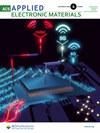Live software documentation of design pattern instances
IF 4.3
3区 材料科学
Q1 ENGINEERING, ELECTRICAL & ELECTRONIC
引用次数: 0
Abstract
Background Approaches to documenting the software patterns of a system can support intentionally and manually documenting them or automatically extracting them from the source code. Some of the approaches that we review do not maintain proximity between code and documentation. Others do not update the documentation after the code is changed. All of them present a low level of liveness. Approach This work proposes an approach to improve the understandability of a software system by documenting the design patterns it uses. We regard the creation and the documentation of software as part of the same process and attempt to streamline the two activities. We achieve this by increasing the feedback about the pattern instances present in the code, during development—i.e., by increasing liveness. Moreover, our approach maintains proximity between code and documentation and allows us to visualize the pattern instances under the same environment. We developed a prototype—DesignPatternDoc—for IntelliJ IDEA that continuously identifies pattern instances in the code, suggests them to the developer, generates the respective pattern-instance documentation, and enables live editing and visualization of that documentation. Results To evaluate this approach, we conducted a controlled experiment with 21 novice developers. We asked participants to complete three tasks that involved understanding and evolving small software systems—up to six classes and 100 lines of code—and recorded the duration and the number of context switches. The results show that our approach helps developers spend less time understanding and documenting a software system when compared to using tools with a lower degree of liveness. Additionally, embedding documentation in the IDE and maintaining it close to the source code reduces context switching significantly.设计模式实例的实时软件文档
背景记录系统软件模式的方法可以支持有意和手动记录这些模式,或自动从源代码中提取这些模式。我们审查过的一些方法不能保持代码与文档之间的接近性。还有一些方法在代码更改后不更新文档。所有这些方法的有效性都很低。方法这项工作提出了一种通过记录软件系统所使用的设计模式来提高系统可理解性的方法。我们将软件的创建和文档记录视为同一过程的一部分,并试图简化这两项活动。为此,我们在开发过程中增加了对代码中存在的模式实例的反馈,也就是增加了有效性。此外,我们的方法还能保持代码和文档之间的接近性,并允许我们在同一环境下对模式实例进行可视化。我们为 IntelliJ IDEA 开发了一个原型--DesignPatternDoc,它可以持续识别代码中的模式实例,向开发人员提出建议,生成相应的模式实例文档,并实现文档的实时编辑和可视化。结果为了评估这种方法,我们对 21 名新手开发人员进行了对照实验。我们要求参与者完成三个任务,这些任务涉及理解和发展小型软件系统(最多六个类和 100 行代码),并记录了持续时间和上下文切换的次数。结果表明,与使用活泼度较低的工具相比,我们的方法可以帮助开发人员减少理解和记录软件系统的时间。此外,在集成开发环境中嵌入文档并将其保持在源代码附近,可以显著减少上下文切换。
本文章由计算机程序翻译,如有差异,请以英文原文为准。
求助全文
约1分钟内获得全文
求助全文

 求助内容:
求助内容: 应助结果提醒方式:
应助结果提醒方式:


